Stainless Steel Backsplash (9 Types for Kitchen Designs)
Backsplashes are a great way to add a modern, stylish look to any kitchen. They come in many materials that range from natural stone, wood, ceramic tile, glass, and even stainless steel. Among these choices, a stainless steel backsplash is one of the most popular choices for creating a modern industrial look.
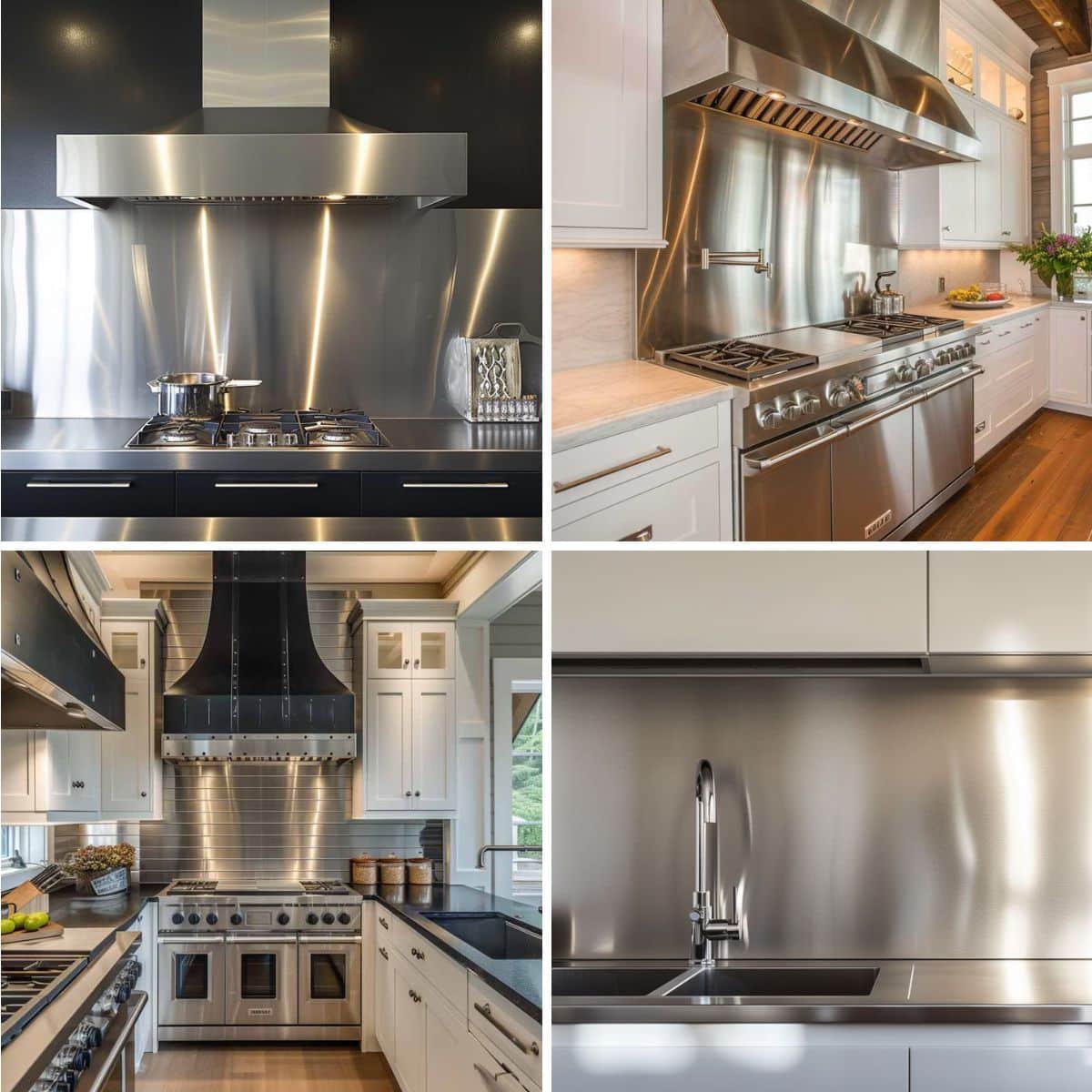
Let’s look deeper into the types, advantages, and disadvantages of stainless steel to see if it’s right for your needs.
Types of Stainless Steel Kitchen Backsplash
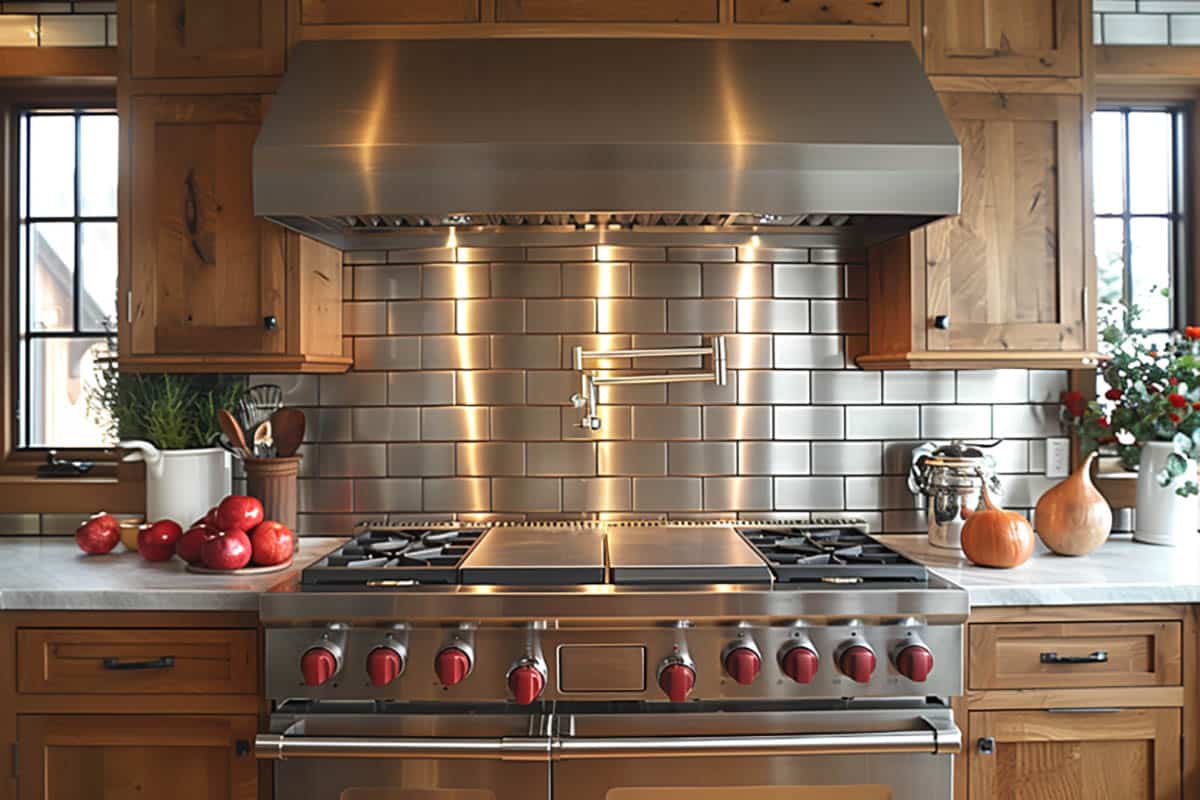
Several types of stainless steel can be used in kitchen backsplashes, such as sheets, tiles, mosaics, peel and stick, panels, etc.
Sheet Backsplash
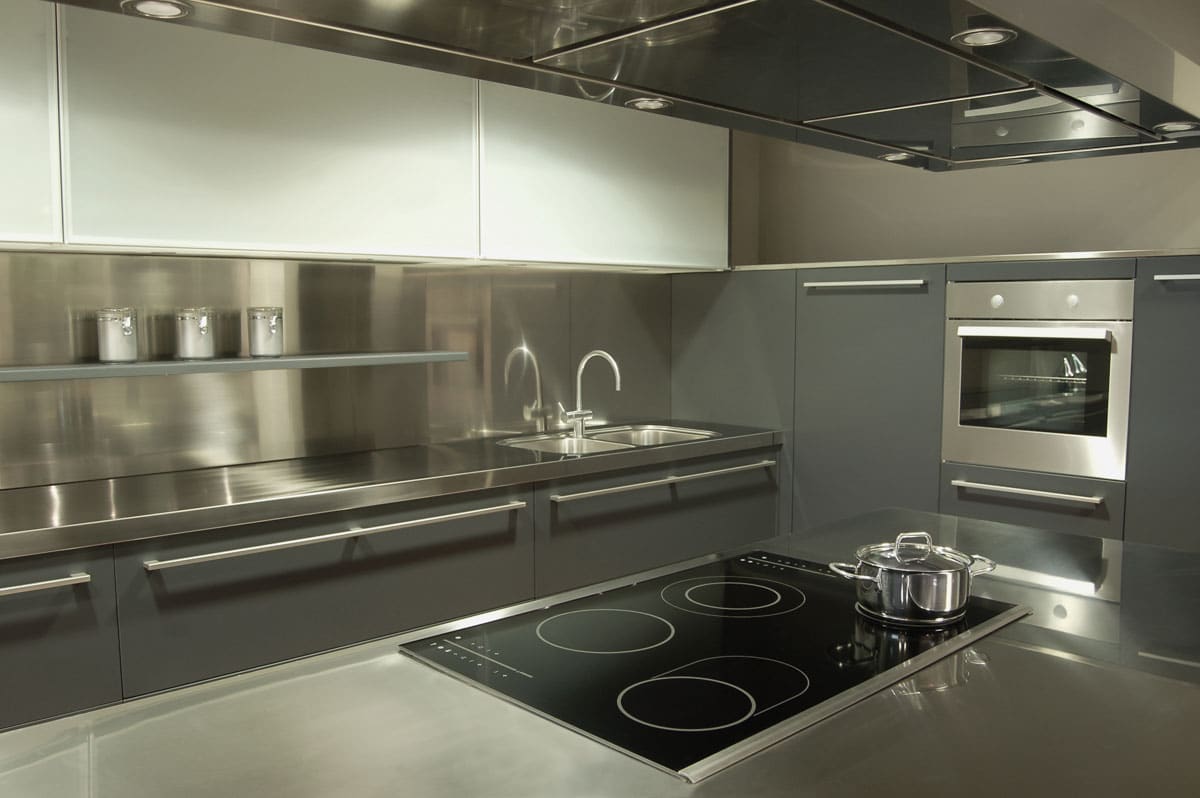
Stainless steel sheets are an attractive and economical choice for kitchen backsplashes. These sheets are made from thin, flexible stainless steel and come in various finishes, including brushed, mirrored, satin, and embossed. They are easy to install and require no special tools or techniques.
Stainless steel sheets come in standard sizes of 2×1 meters, 2.5×1.25 meters and 3.0×1.5 meters. However, some manufacturers also offer sheets in non standard widths and lengths.
The thickness ranges from 0.4 millimeters to 6 millimeters, and these include light duty ( 24 gauge), medium duty (22 gauge) and heavy-duty (20 gauge). The finishes also vary and popular choices include brushed, mirror, and polished.
Tile Backsplash

Available in a variety of sizes and shapes, stainless steel tiles are another form of backsplash. These tiles are available in various shapes, sizes, and finishes, making them an excellent choice for any kitchen.
Stainless steel tiles typically range from 1”x1” to 12”x12”. The size of the tiles will depend on the area where you are installing them. Generally, tiles should be 4”x4” or 6”x6” for a backsplash. However, you can also use larger tiles up to 12”x12” or even more significant if you prefer a more dramatic look.
Stainless steel tiles can be installed in various ways, including in a grid, with individual tiles, or as a single sheet. If you want to make your kitchen’s backsplashes more interesting, you can explore a variety of patterns, such as chevron and herringbone backsplash tile.
Mosaic Backsplash
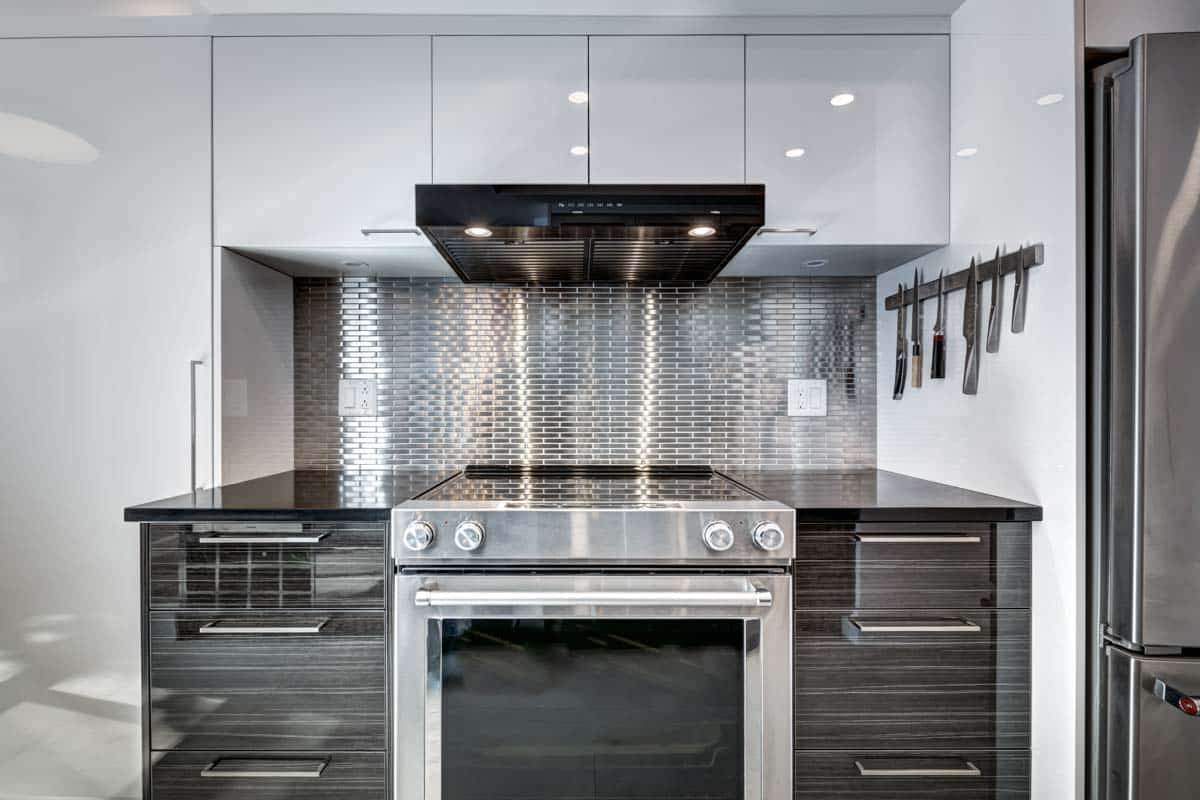
Stainless steel mosaic tiles are a great option when looking for a modern and contemporary look in your home. These tiles have a unique texture and shine that can bring out the best in your kitchen.
This type of mosaic tile consists of small pieces of stainless steel arranged in a pattern to create a design. The mosaic tiles are attached to a mesh backing for easier installation and come in standard tile sizes of 30×30 centimeters.
Stainless steel mosaic tiles can also be mixed with other materials such as glass, stone, porcelain, etc. They come in various shapes, sizes, and colors and can be used to create a unique and stylish wall feature in any kitchen.
The tiles come in various colors, from timeless neutrals and vibrant hues to metallic accents like copper, bronze, and silver. With a wide range of colors and patterns, you can easily find the perfect tile to match your existing décor.
This type of mosaic tile kitchen backsplash is easy to clean and maintain and is highly durable, making it a great choice. They are also very affordable, making them a great option for those on a budget.
Backsplash Panels
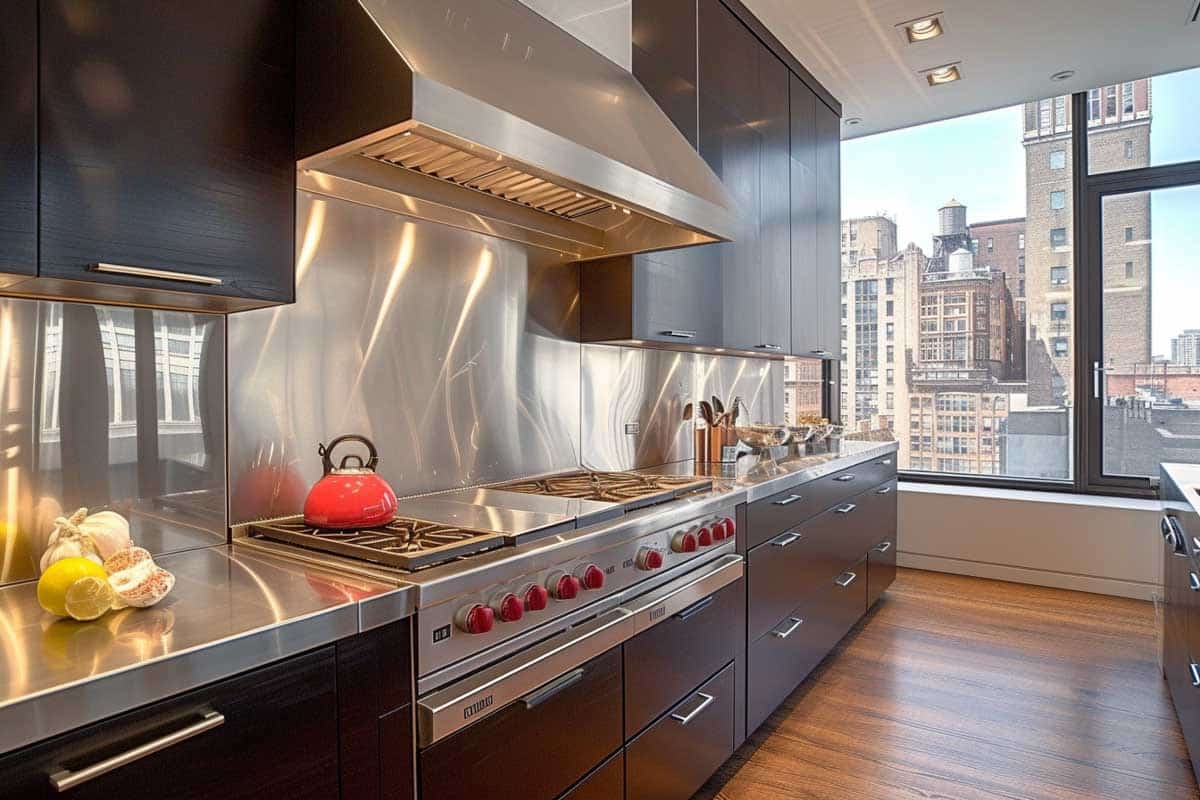
Stainless steel panels are an attractive and durable option for kitchen backsplashes. They come in different sizes and can be custom-cut to fit any surface. The increments for standard sizing of panels come in 6 inches.
Examples of which are : 6″ x 30″ , 12″ x 30″, 18″ x 30″, 24″ x 30″, 30″ x 30″, 36″ x 30″ and 6″ x 36″, 12″ x 36″, 18″ x 36″, 24″ x 36″, 30″ x 36″ , 36″ x 36″. These sizes can still vary depending on the manufacturer. On average, a piece of stainless steel panel can range from $80 to $350, depending on the finish, pattern, and hems.
For the thicknesses, the standard choice for panels includes gauge 24 for light duty, gauge 22 for medium duty, and gauge 20 for heavy duty.
Stainless steel panels can have a plain or textured pattern, making them an eye-catching addition to any kitchen. They are easy to install and come in a range of finishes such as brushed, mirrored and polished, to name a few.
Stainless Backsplash Cut to Size
Aside from standard-sized panels, stainless steel backsplashes can be custom-ordered and cut to size. With a cut-to-size order, they are customized according to one’s requirements and specifications; this type offers a more seamless appearance compared to installations that require joining small pieces together, such as mosaics and tiles.
If you are planning on doing it yourself, cutting a panel according to size will require a jigsaw with a metal cutting blade. This will allow you to make precise cuts and achieve the desired shape and size.
Keep in mind that cutting metal can be dangerous as the edges can be very sharp. Wear safety glasses and a dust mask when cutting metal to protect your eyes and lungs from flying debris. Additionally, you can use a metal cutting saw or a nibbler to make more intricate cuts.
Peel and Stick Stainless-Steel Backsplash

Peel and stick stainless steel is a product that comes in pre-cut sheets with an adhesive backing. This can be easily and quickly applied to existing walls, countertops, and other surfaces. They can be found in a variety of colors, textures, and finishes.
The sheets are designed to provide a durable, water-resistant, and easy-to-clean surface that won’t rust, corrode, or discolor over time. These peel and stick backsplash types are also relatively easy to remove and can be reused in other areas of the home.
Peel and stick sheets are a great way to update kitchen backsplashes quickly and easily without a messy or costly installation process.
Black Stainless Coated Backsplash
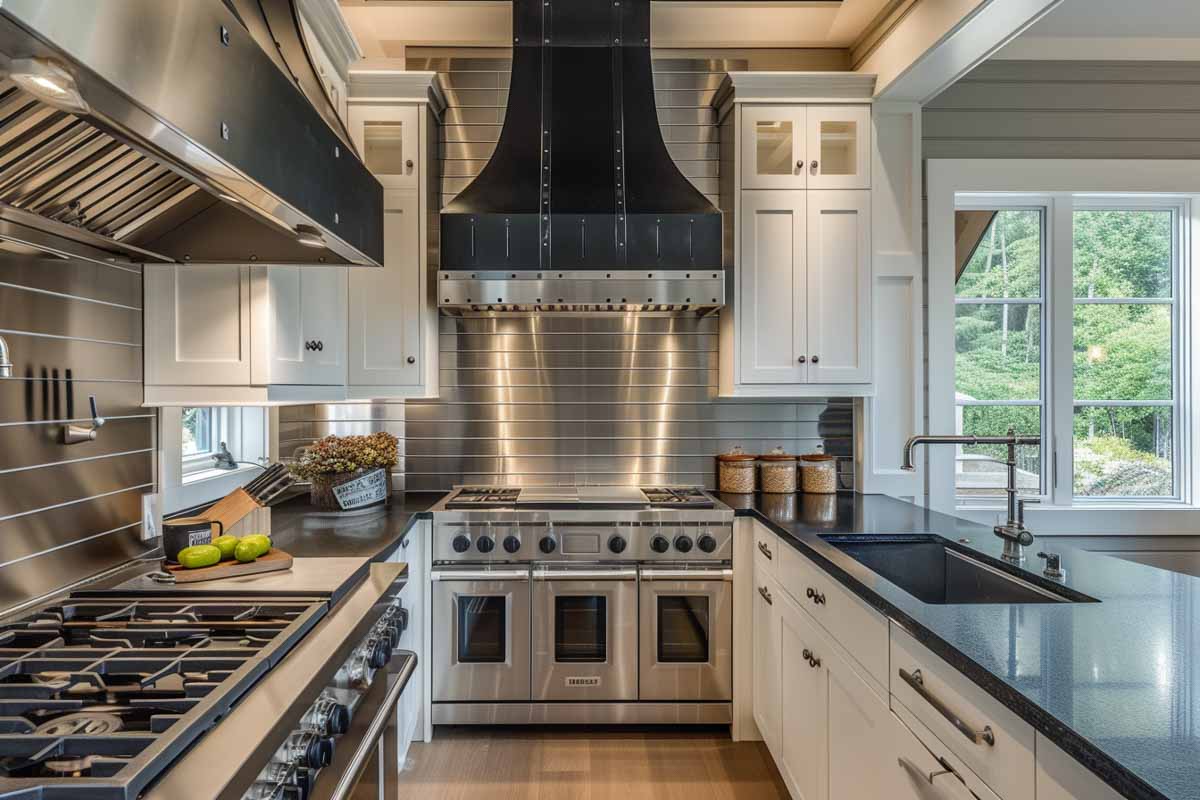
If you find the natural color of stainless steel too stark and too commercial-looking, you can opt for black-coated metal backsplashes. Black stainless steel is coated with black oxide, which gives it more protection than the standard surface finish.
Unlike regular, black stainless steel backsplash looks more bold and updated. It can offer a sleek element to modern kitchen designs and provides a unique contrast to other decorative elements and appliances, making the entire kitchen look stylish and luxurious. With a black finish, you can instantly make your backsplash the focal point of the kitchen. The resulting overlook is also more dramatic and fresh.
To get the best look, add a contrasting tile splashguard, such as white or gray, to make the black finish stand out even more. If you want to make a statement, you can mix it with marble or glass to accentuate the look.
Brushed Stainless Finish Backsplash
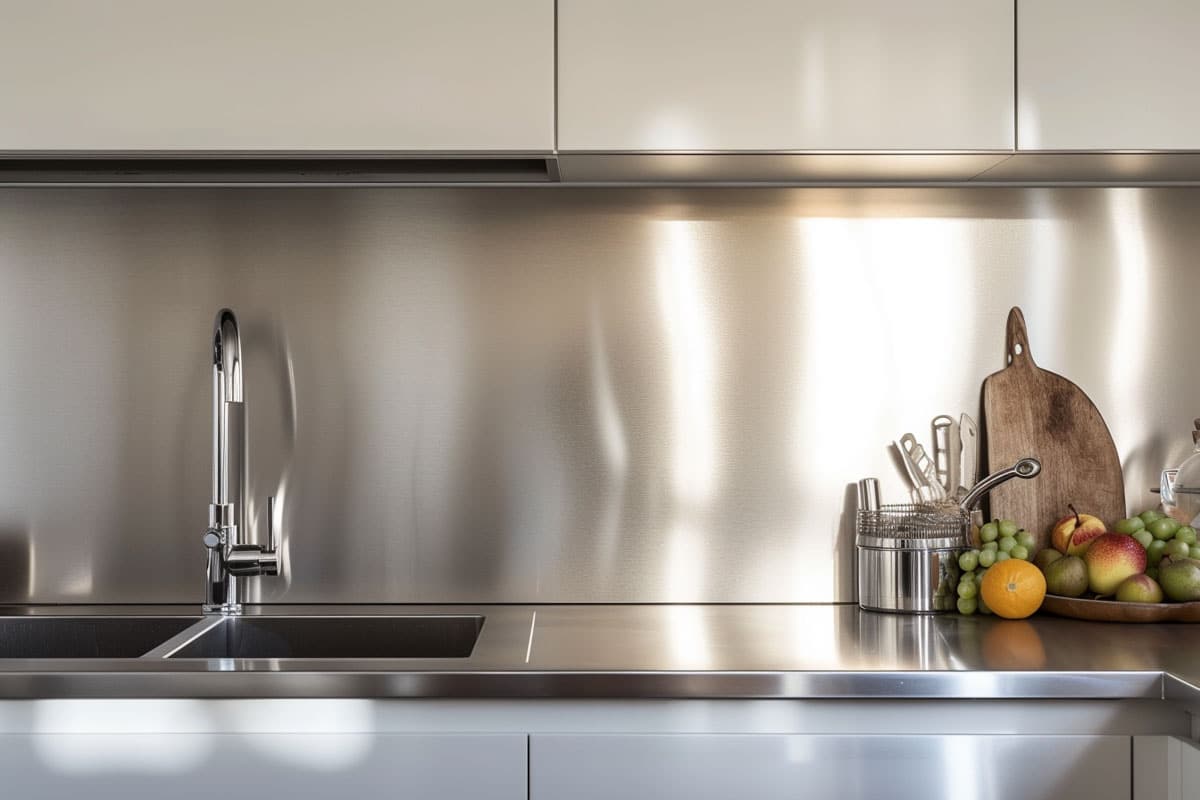
Brushed stainless steel is popular for backsplashes due to its sleek, modern look. Brushed stainless steel has been given a brushed finish. Creating the brushed finish involves brushing the metal with an abrasive material such as steel wool or sandpaper.
This results in a matte finish that has a slightly rough texture. Brushed finishes are often used in kitchen and bathroom appliances and fixtures due to its durability and resistance to corrosion.
Stainless Splashguard for Stove
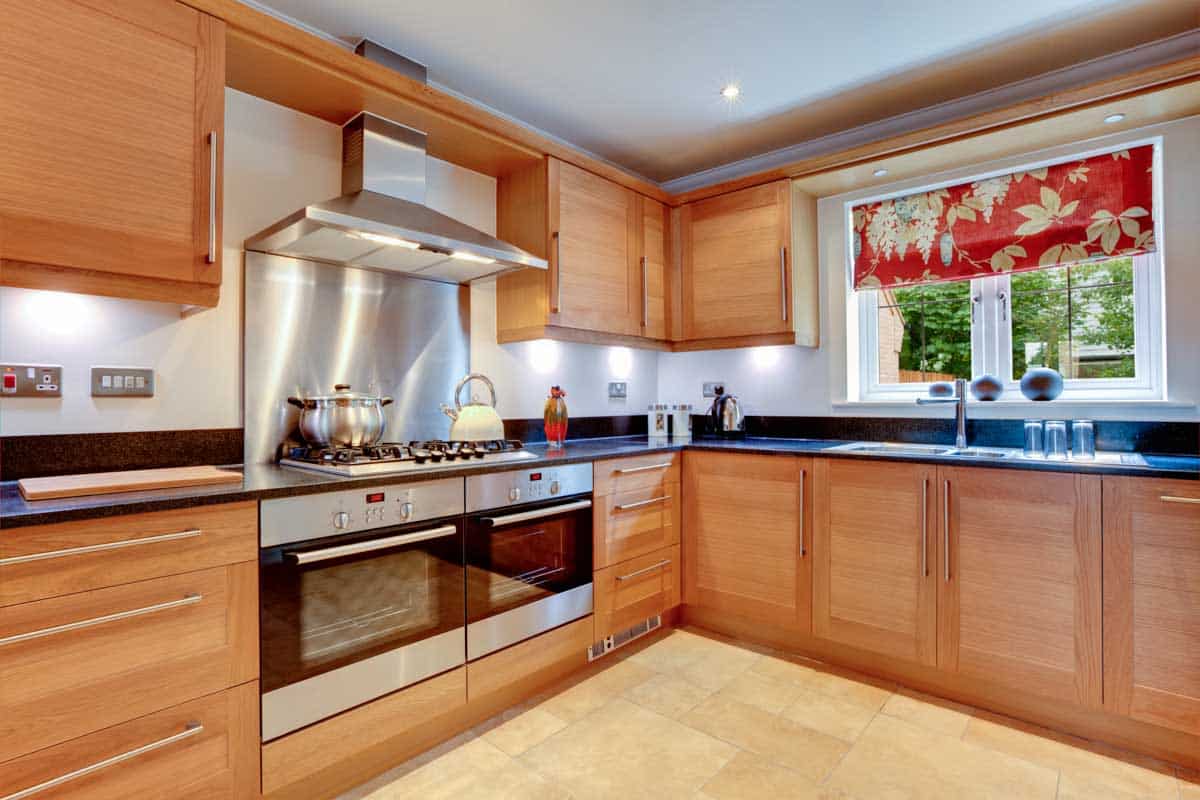
A stainless steel backsplash for a stove is a great way to protect your walls and create a modern look in the kitchen. The stainless steel will be durable, easy to clean, and will make your kitchen look sleek and stylish.
You can find stainless steel backsplash panels in a variety of shapes and sizes to fit your specific stove. Installation of these backsplashes are relatively simple and can usually be done with a few basic tools.
The type used, and the particular application will determine the thickness behind a stove. Stainless steel backsplashes should be made of 16- to 18-gauge material. (The smaller the number, the thicker the gauge of metal.) The material will be more resilient and less likely to sustain damage the thicker the gauge.
Thickness of Stainless Material Backsplash
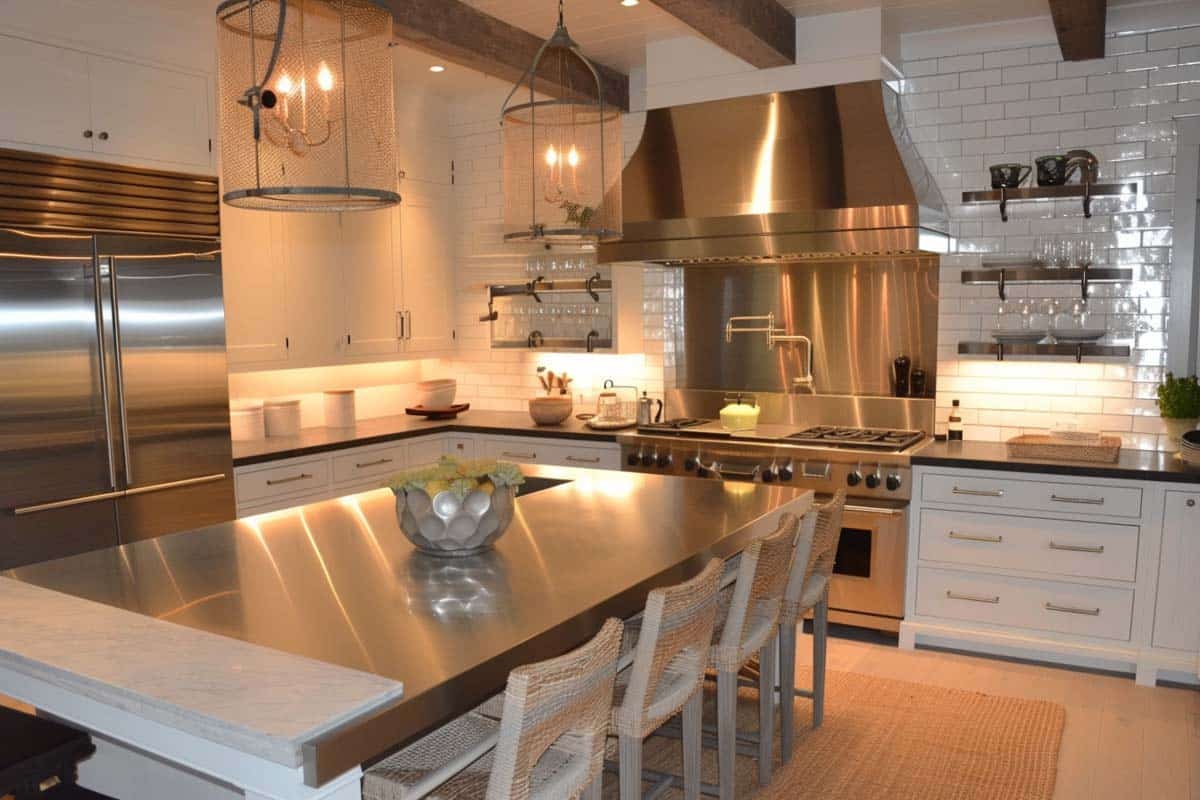
The thickness of a stainless steel backsplash for a stove can vary depending on the type. Generally, the thickness of a stainless steel backsplash for a stove should be between 16 and 18 gauge.
Stainless steel can serve as a startlingly unusual backsplash, one that sends the message that the kitchen is meant for cooking. – Kitchen Ideas You Can Use, Updated Edition, Chris Peterson
Thicker stainless steel is better for areas exposed to more heat or with a lot of wear and tear. Thinner materials are better for places that do not get as much wear and tear or that are only exposed to low levels of heat.
Pros and Cons of Stainless For a Backsplash
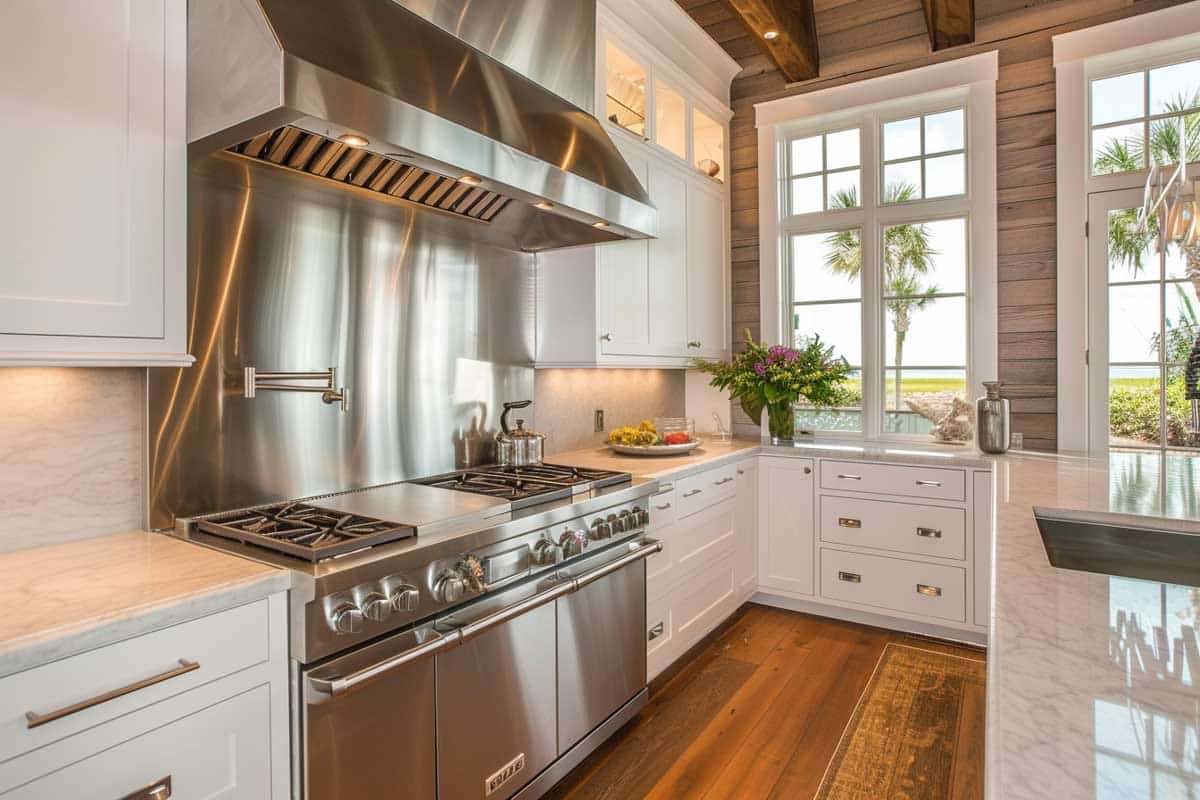
Pros:
• Offers excellent wall protection: Stainless steel backsplashes can protect walls from grease and spills. Additionally, it is incredibly resilient and protects walls from heat, moisture, and everyday wear and tear.
• Durability: Stainless steel is a strong and durable material, making it an excellent choice for busy kitchens.
• Lasts a lifetime: These backsplashes will last for years without any signs of wear and tear
• Resistant to heat: Stainless steel is resistant to heat and can withstand high temperatures. It is an ideal choice for kitchens with high-temperature cooking appliances.
• Easy to clean: This surface is easy to clean and maintain. It is non-porous and resistant to staining and odors, so it does not require frequent cleaning.
• Cost-effective: The material can be a cost-effective choice for backsplashes compared to other materials.
• Versatile: Stainless steel can be used in contemporary and traditional kitchens. It can also be etched, painted, or textured to create a unique look.
• Offers a clean look: These backsplashes can give any kitchen a modern and sleek look.
• Creates a unique focal point in the space: They are also great for creating a focal point in the kitchen, as the reflective surface can draw attention to the area.
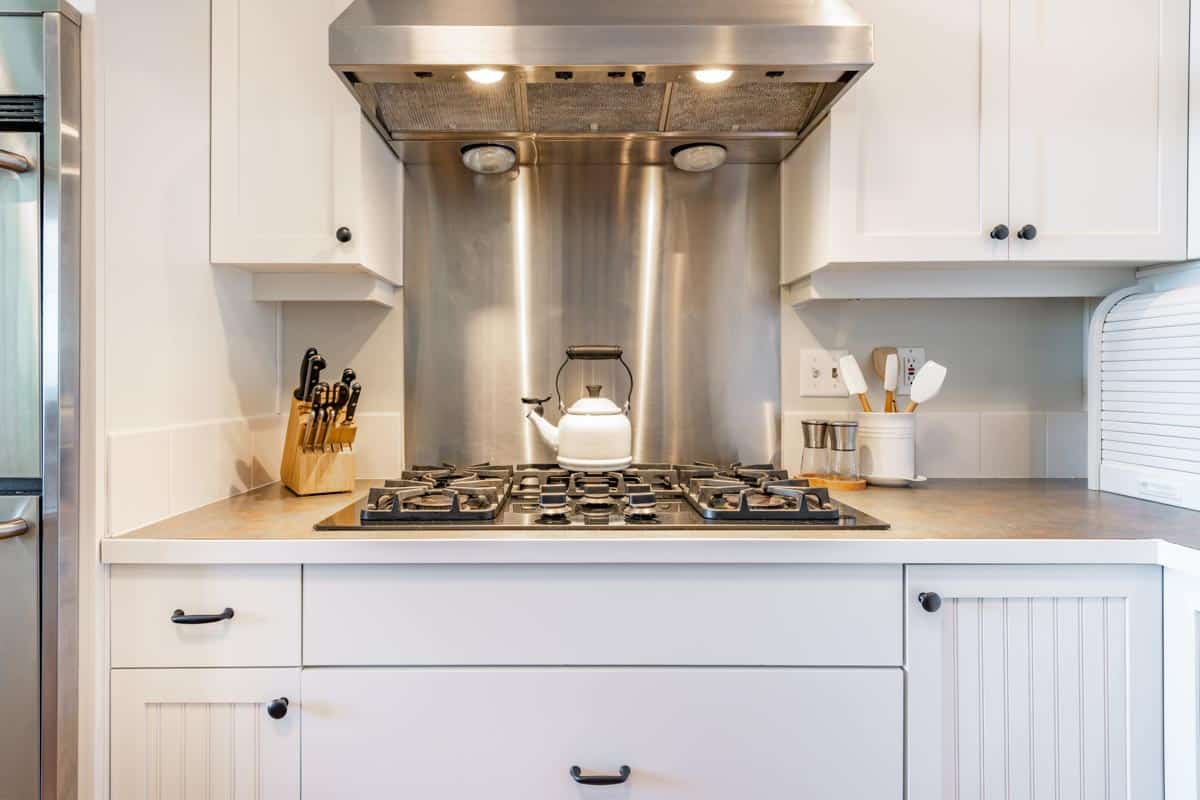
Cons:
• Expensive: These backsplashes can be more expensive than other materials, such as tile or laminate backsplash, but it is worth it for the look and durability.
• Needs frequent cleaning: Susceptible to marks like fingerprints and water spots
• Can be damaged: Stainless steel can easily be scratched and dented.
• Needs care: Can rust over time if not correctly cared for.
How to Clean Stainless Surfaces

Maintaining this backsplash is fairly easy and requires no special tools or materials. Below are some of the steps for cleaning this type of backsplash:
What You’ll Need:
• Soft cloth or microfiber cloth
• Non-abrasive sponge• Mild dish soap
• Warm water
• Commercial stainless steel cleaner
• Stainless steel polish
Steps for Cleaning a Stainless Steel Backsplash
1. Wipe down the surface of the stainless steel backsplash with a clean, damp cloth to remove any loose dirt and debris.
2. Mix a solution of warm water and mild dish soap in a spray bottle and spray the backsplash.
3. Use a non-abrasive sponge or soft cloth to scrub the backsplash in a circular motion.
4. Rinse the surface with warm water and dry with a clean, soft cloth.
5. For tougher stains, apply a commercial stainless steel cleaner and follow the instructions on the packaging.
Alternatively, you can use a mild all-purpose cleaner and a soft sponge to scrub off any stubborn dirt and grime spots.
Another homemade solution you can try is white vinegar mixed with water. Soak a soft cloth in the solution and apply it to the stainless steel backsplash. Scrub gently with the cloth and rinse with clean water.
6. Rinse and dry the backsplash after using the cleaner.
7. To keep your stainless steel backsplash looking its best, use a stainless steel cleaner and polish. Apply a small amount of the product to a soft cloth and rub in a circular motion.
8. Finally, use a clean cloth to buff the surface and remove any excess cleaner or polish.
See more related content in our article about octagon backsplash on this page.

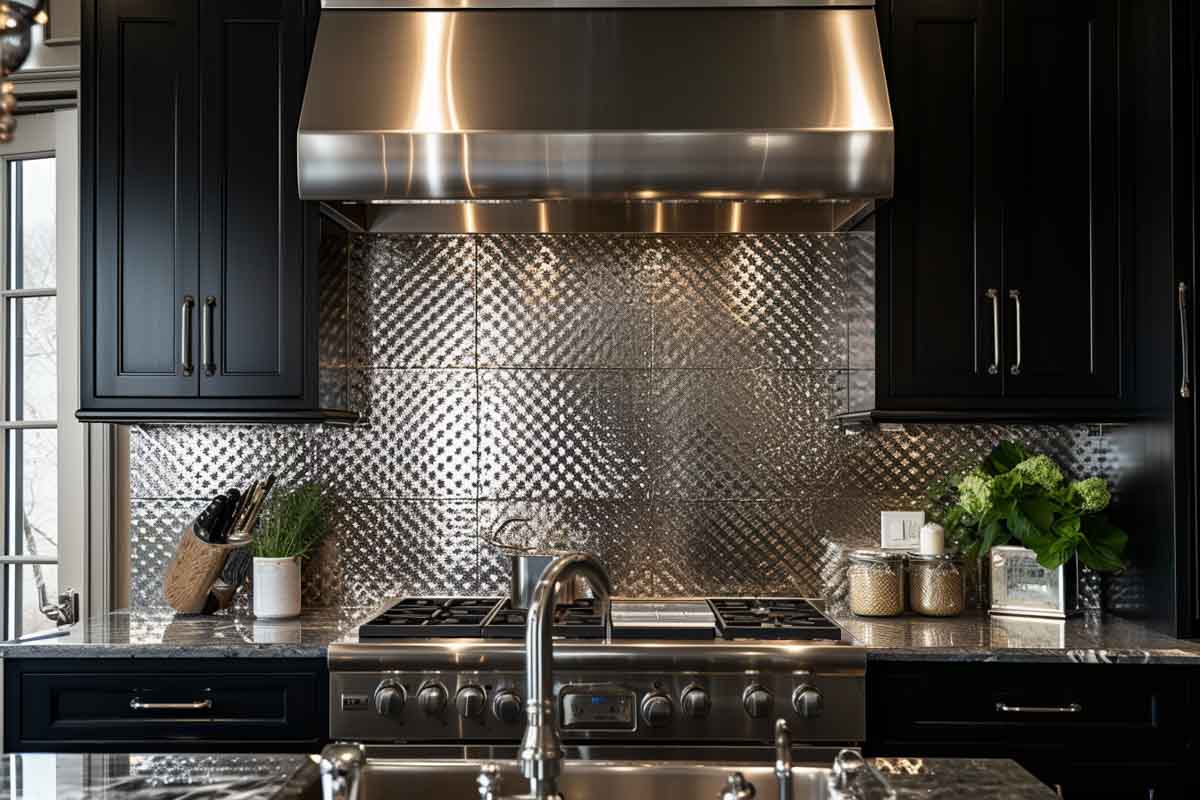
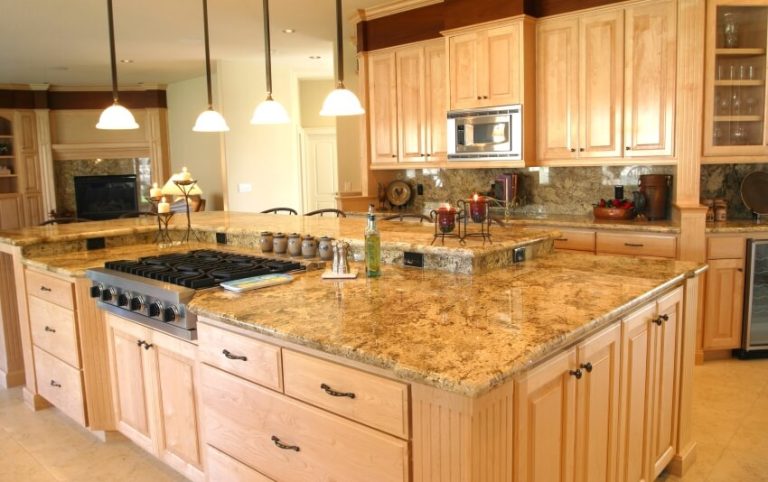

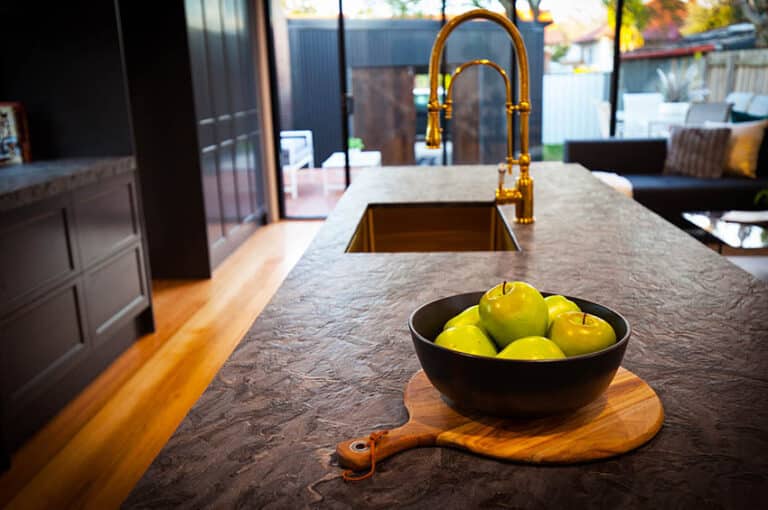
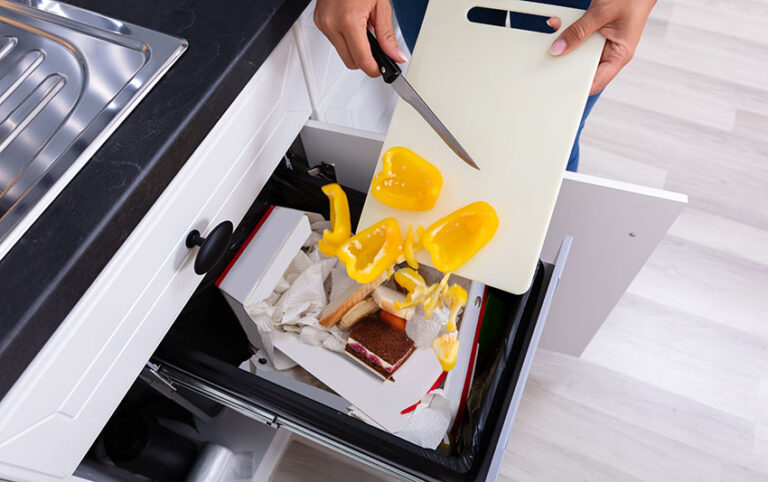
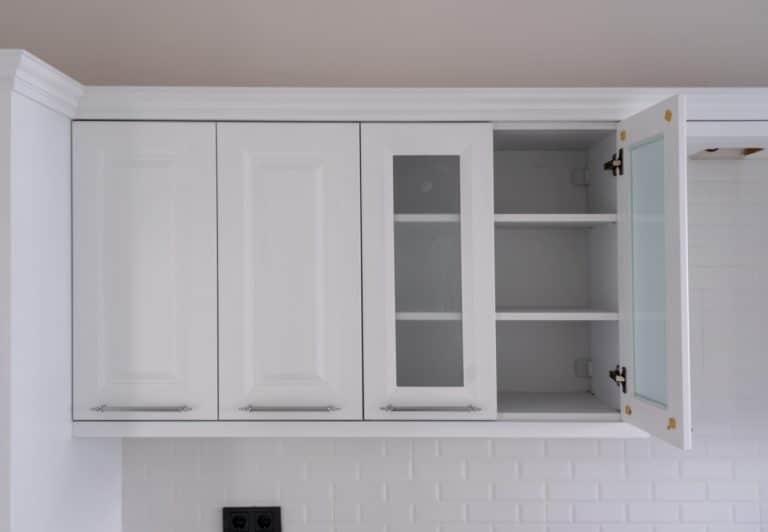
New Hampshire Duplex home
I have a small kitchen
9X7 ‘. With new LG stainless fridge, DW and electric glass cook top
2 tone cabinets blue bottoms white upper cabinets
Light oak flooring. Blue/grey granite tops
Looking for new ideas …. colors, backsplash
lighting
TY
Are 2 tone cabinets in style now??
TY
Jay
Two tone cabinets have been trending for a few years and will continue into the future. Choosing something really depends on if its your forever home or you plan on selling. some paint colors may be seen as dated in the next decade as styles and preferences change. You can choose timeless color pairings that should help you avoid this if its a concern. Thanks for the question.